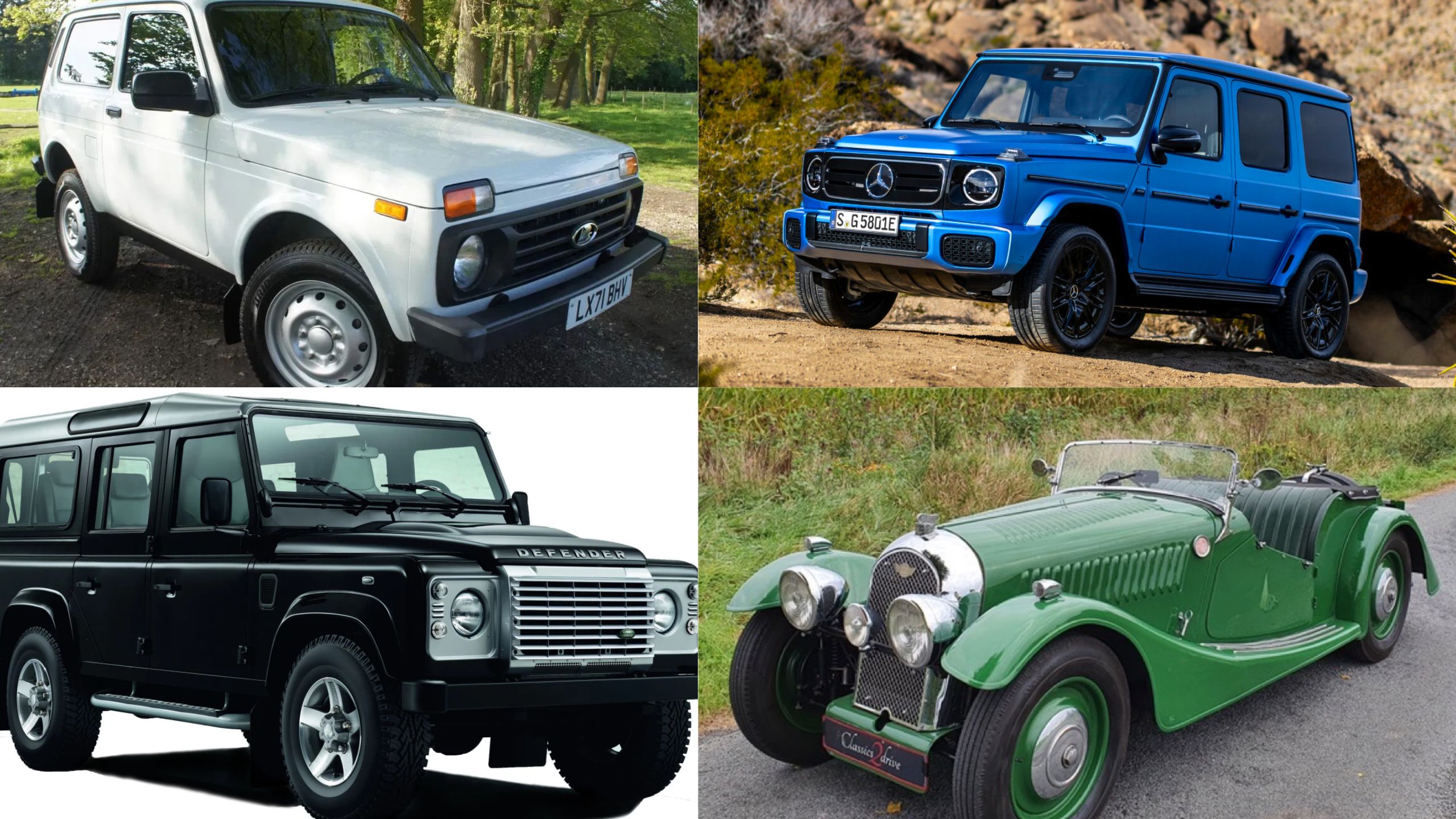The automotive world typically celebrates innovation and change, with manufacturers regularly updating their models to incorporate the latest technology, design trends, and efficiency improvements.
However, some vehicles have achieved such perfect formulas that they’ve remained fundamentally unchanged for decades. These automotive survivors represent engineering that was so ahead of its time or perfectly matched to its purpose that radical redesigns proved unnecessary.
From utilitarian workhorses to specialized military vehicles, these long-running generations have earned their longevity through reliability, adaptability, and an unwavering commitment to their original mission.
While they may have received incremental updates, their core designs remain recognizably similar to when they first rolled off production lines years sometimes decades ago.
This remarkable continuity stands as testament to the “if it isn’t broken, don’t fix it” philosophy, demonstrating that sometimes, getting it right the first time means a design can stay relevant across generations of drivers, surviving changing markets, technological revolutions, and evolving consumer expectations.
1. Morgan 4/4 (1936-Present)
The Morgan 4/4 holds the distinction of being the longest continuously produced vehicle model in automotive history. First introduced in 1936, this British sports car has maintained its fundamental design philosophy for nearly nine decades, making it a living automotive fossil.
The name “4/4” signifies the vehicle’s four wheels and four-cylinder engine, a simple nomenclature reflecting the car’s straightforward approach to driving pleasure.
What truly sets the Morgan 4/4 apart is its steadfast commitment to traditional manufacturing techniques. While most automakers have embraced automation and modern production methods, Morgan still builds each 4/4 largely by hand at their factory in Malvern, Worcestershire.
The wooden frame construction, typically ash wood, remains a signature element of the Morgan, with skilled craftsmen shaping and fitting each piece using techniques passed down through generations.
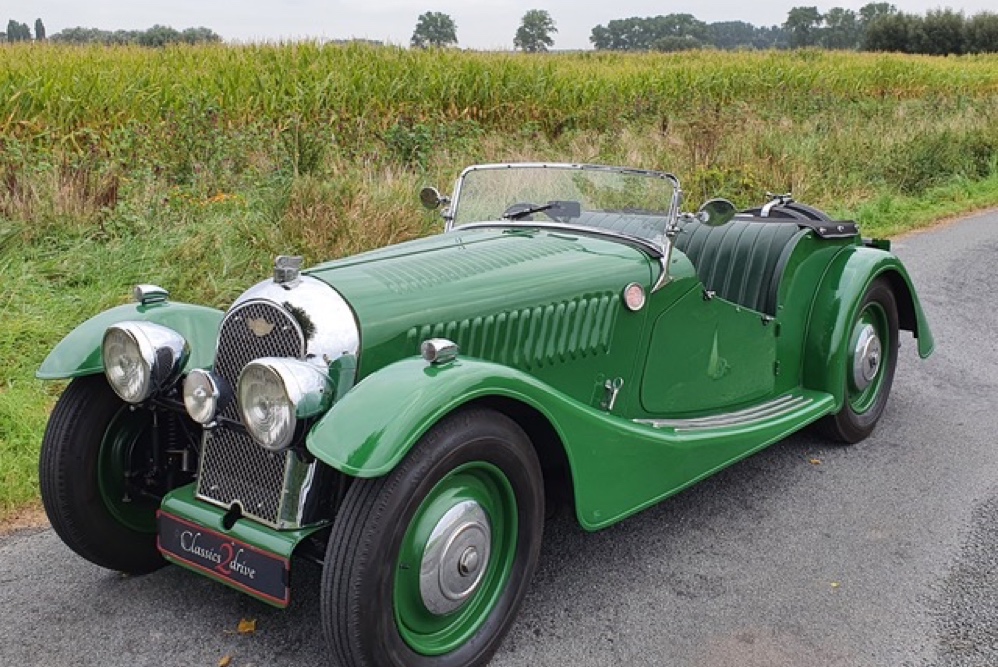
The car’s styling has evolved subtly over the years, but its core aesthetic, long hood, flowing fenders, and minimalist cockpit remain instantly recognizable to anyone familiar with the original. This visual continuity speaks to Morgan’s respect for its heritage and the enduring appeal of its design language.
Under the hood, the 4/4 has necessarily evolved, with modern Ford-sourced engines replacing the original Coventry Climax power plants, and contemporary safety features gradually incorporated to meet changing regulations.
Yet despite these concessions to modernity, driving a Morgan 4/4 remains a visceral experience largely unchanged from decades past: the driver sits low to the ground in a spartan interior, with minimal electronic interference between human and machine.
The 4/4’s continued production represents a remarkable achievement in an industry obsessed with planned obsolescence and constant redesigns. Its longevity speaks not only to the soundness of its original engineering but also to the existence of a dedicated market segment that values tradition, craftsmanship, and a pure driving experience over technological advancement for its own sake.
2. Lada Niva (1977-Present)
The Lada Niva represents a unique convergence of Soviet practicality and surprising innovation that has allowed it to remain in production with minimal changes since 1977.
Originally designed to provide Soviet agricultural workers with a capable, affordable off-roader, the Niva (meaning “crop field” in Russian) pioneered the concept of a unibody SUV with permanent all-wheel drive, a configuration that wouldn’t become common in Western markets until decades later.
What makes the Niva’s longevity remarkable is the challenging conditions it was designed to overcome. Soviet engineers created a vehicle that could handle the brutal Russian winter, poorly maintained rural roads, and limited access to sophisticated maintenance facilities.
This focus on rugged simplicity resulted in a vehicle that, while lacking refinement by Western standards, proved nearly indestructible in the hands of its users.
The Niva’s mechanical layout was revolutionary for its time: a front-engine design with a full-time four-wheel-drive system featuring a central differential lock.
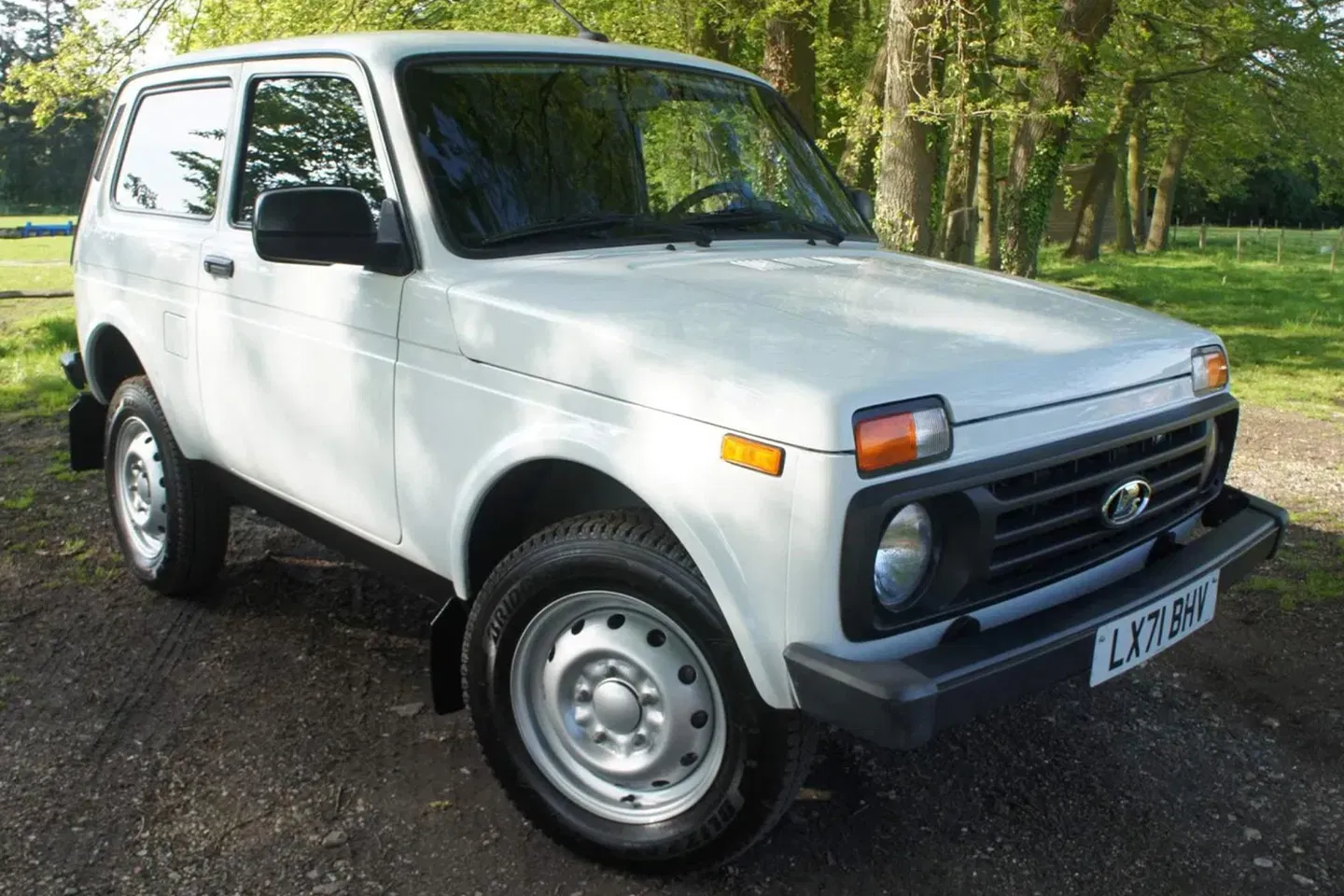
This configuration provided excellent off-road capability while maintaining reasonable on-road manners, a balance that many more expensive vehicles struggled to achieve.
Its compact dimensions (shorter than many modern compact cars) combined with substantial ground clearance and approach/departure angles made it exceptionally capable in tight off-road situations.
Throughout its production run, the Niva has received incremental updates rather than complete redesigns.
The original 1.6-liter engine gave way to more modern power plants, and interior comforts gradually improved, but the fundamental architecture remains recognizable from the original 1977 model.
Even the exterior styling has remained largely consistent, with its boxy profile and utilitarian aesthetic becoming iconic in Eastern Europe and developing markets worldwide.
The Niva’s endurance in the marketplace stems from its remarkable value proposition: genuine off-road capability at an extremely affordable price point.
In many developing nations and rural regions, this combination remains as appealing today as it was in the 1970s.
While AvtoVAZ (now part of the Renault-Nissan-Mitsubishi Alliance) has introduced more modern alternatives, the classic Niva continues in production, finding buyers who appreciate its simple mechanicals, ease of repair, and proven capability.
3. Mercedes-Benz G-Class (1979-Present)
The Mercedes-Benz G-Class, affectionately known as the G-Wagen (short for Geländewagen, or “cross-country vehicle”), stands as one of the most remarkable examples of a utilitarian design evolving into a luxury icon while maintaining its core identity.
Developed originally as a military vehicle at the suggestion of the Shah of Iran (then a significant Mercedes-Benz shareholder), the G-Class entered civilian production in 1979 with an emphasis on off-road capability and reliability above all else.
The vehicle’s distinctive boxy silhouette, characterized by flat surfaces, exposed hinges, and prominent indicators mounted atop the front fenders, was purely functional in origin.
The slab-sided design maximized interior space, improved visibility for off-road maneuvering, and simplified manufacturing. This utilitarian approach extended to the mechanical underpinnings, with solid axles, three fully locking differentials, and a ladder frame chassis providing exceptional articulation and durability in extreme terrain.
What makes the G-Class’s longevity particularly fascinating is its gradual transformation from a Spartan military transport to a status symbol without abandoning its fundamental design.
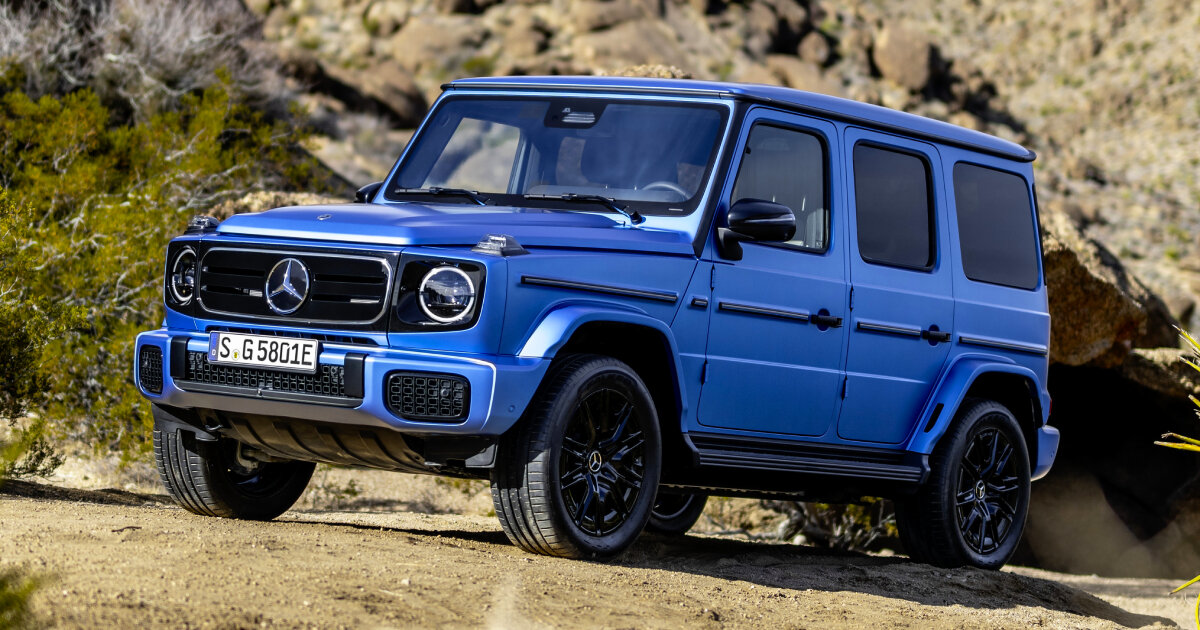
While the 2018 redesign represented the most significant update in the vehicle’s history, Mercedes-Benz carefully preserved the iconic exterior appearance and off-road DNA while modernizing the underpinnings.
This reverence for heritage stands in stark contrast to most long-running nameplates, which typically undergo complete visual and structural redesigns multiple times over similar periods.
The G-Class’s evolution mirrors changing market demands, gradually incorporating luxury features, more powerful engines (culminating in the outrageous AMG variants), and sophisticated electronics.
However, unlike many luxury SUVs that sacrifice capability for on-road comfort, the G-Class maintains its core off-road equipment; the triple-locking differentials, generous ground clearance, and rigid axles remain standard even on the most opulent versions.
This commitment to capability alongside luxury has created a unique market position that has allowed the G-Class to thrive long after its utilitarian contemporaries disappeared.
The vehicle’s authenticity, its real military heritage and genuine capability provide a story and substance that newly developed luxury SUVs often lack, making its anachronistic design an asset rather than a liability in the premium market.
4. Toyota Land Cruiser 70 Series (1984-Present)
The Toyota Land Cruiser 70 Series represents perhaps the purest expression of automotive functionality over fashion, having remained in continuous production since 1984 with only minimal changes to its core design.
While Toyota has developed numerous more modern Land Cruiser variants (the 200 and 300 Series luxury models), the 70 Series continues as a specialized tool for the most demanding environments on earth.
Originally introduced as a modernization of the legendary 40 Series, the 70 Series was designed primarily for commercial, industrial, and agricultural applications where reliability under extreme conditions was the primary consideration.
Its body-on-frame construction, solid axles, and manually engaged four-wheel-drive system prioritized simplicity and durability over comfort or convenience.
Notably, many versions continue to use manual locking hubs and basic leaf spring suspension technologies long abandoned by most competitors in favor of more sophisticated (but potentially more failure-prone) alternatives.
What distinguishes the 70 Series from other long-running designs is its continued relevance in specific professional contexts.

In the Australian Outback, African wilderness, and Middle Eastern deserts, the 70 Series remains the vehicle of choice for mining companies, humanitarian organizations, and government agencies operating far from service infrastructure.
Its mechanical simplicity means repairs can be performed with basic tools, while its robust construction withstands punishment that would quickly disable more modern designs.
The 70 Series has evolved primarily through expansion rather than redesign.
Toyota offers multiple body styles the short-wheelbase “Bundera,” traditional wagon, pickup (single and double cab), and the lengthened “Troop Carrier,” each specialized for different applications.
Engine options have modernized to meet emissions regulations, with efficient diesel engines replacing earlier powerplants, but the vehicle’s essential character remains unchanged.
Perhaps most tellingly, Toyota has repeatedly announced plans to end 70 Series production, only to reverse course due to unwavering demand from specific markets and applications where no modern alternative can match its particular combination of attributes.
This dedicated user base of professionals who depend on their vehicles under life-or-death conditions rather than casual consumers has ensured the continuation of a design that prioritizes function over form, reliability over refinement, and proven solutions over innovation for its own sake.
Also Read: 10 Cars With Engines That Outlive Their Bodies
5. Land Rover Defender (Original Series) (1983-2016/2019)
The Land Rover Defender, whose basic design dates back to 1983 (building on the earlier Series models dating to 1948), represents one of the most recognizable and purpose-built four-wheel-drive vehicles in automotive history.
While production of the original Defender officially ended in 2016 (2019 in certain markets), its 33+ year production run with minimal fundamental changes earns it a place among the longest-running vehicle generations, and its influence continues through specialized continuation models and aftermarket support.
The Defender’s distinctive squared-off profile was born of pure functionality: flat aluminum body panels that were easy to manufacture and repair, a nearly vertical windshield that maximized interior space and visibility, and modular construction that allowed for numerous body configurations from the same basic platform.
This utilitarian approach extended to the interior, where exposed screw heads, minimal sound insulation, and washable surfaces reflected the vehicle’s working-class roots. What made the Defender truly special was its uncompromising approach to off-road capability.
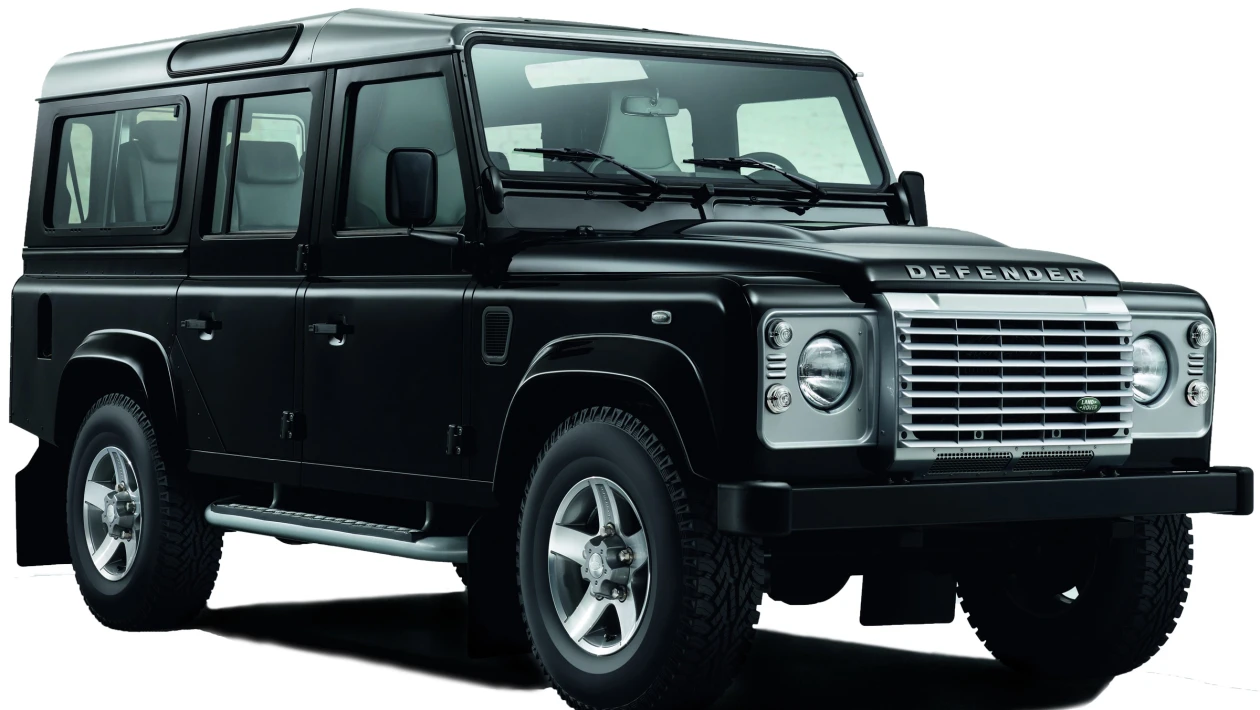
The combination of exceptional ground clearance, short overhangs, permanent four-wheel drive, and long-travel suspension created a vehicle that could go through terrain impassable to most other vehicles.
This capability made it the vehicle of choice for organizations ranging from the British military to the Red Cross, establishing a reputation for reaching the unreachable under the most challenging conditions.
Throughout its production, the Defender received gradual updates rather than comprehensive redesigns. The switch from leaf springs to coil springs, the introduction of more modern diesel engines, and incremental improvements to creature comforts occurred without altering the vehicle’s essential character or capabilities.
Even as Land Rover’s other models (Range Rover, Discovery) became increasingly luxurious and electronically sophisticated, the Defender remained focused on its core mission.
The Defender’s eventual discontinuation came primarily from its inability to meet modern safety and emissions standards without a fundamental redesign.
However, its influence lives on through an extensive network of specialists who refurbish and upgrade original vehicles, and through Land Rover’s own continuation and tribute models.
Perhaps most telling is that the 2020 “New Defender,” despite its completely modern underpinnings, deliberately evokes the styling cues and capability focus of its predecessor, acknowledging that some designs become definitive expressions of their purpose.
6. Suzuki Jimny (Third Generation) (1998-2018)
The third-generation Suzuki Jimny stands as a remarkable example of engineering focus and market understanding, maintaining its core design for an impressive 20 years in an industry where 5-7 year product cycles are the norm.
Introduced in 1998 and produced until 2018, this compact off-roader preserved an increasingly rare approach to four-wheel-drive vehicles: unapologetically prioritizing off-road capability over on-road refinement.
What made the third-generation Jimny’s long production run particularly notable was its steadfast commitment to traditional off-road engineering principles during an era when most competitors were abandoning them.
While the broader SUV market shifted toward car-based crossovers with all-wheel drive, the Jimny maintained its ladder frame chassis, solid axles at both ends, and a proper low-range transfer case, a mechanical setup more closely resembling full-size off-roaders than vehicles of its compact dimensions.
The Jimny’s distinctive boxy styling wasn’t merely aesthetic but fundamentally practical. The upright windshield and squared-off body maximized interior space within its tiny footprint (less than 12 feet long), while the flat hood and visible fenders made precise placement on technical trails much easier.
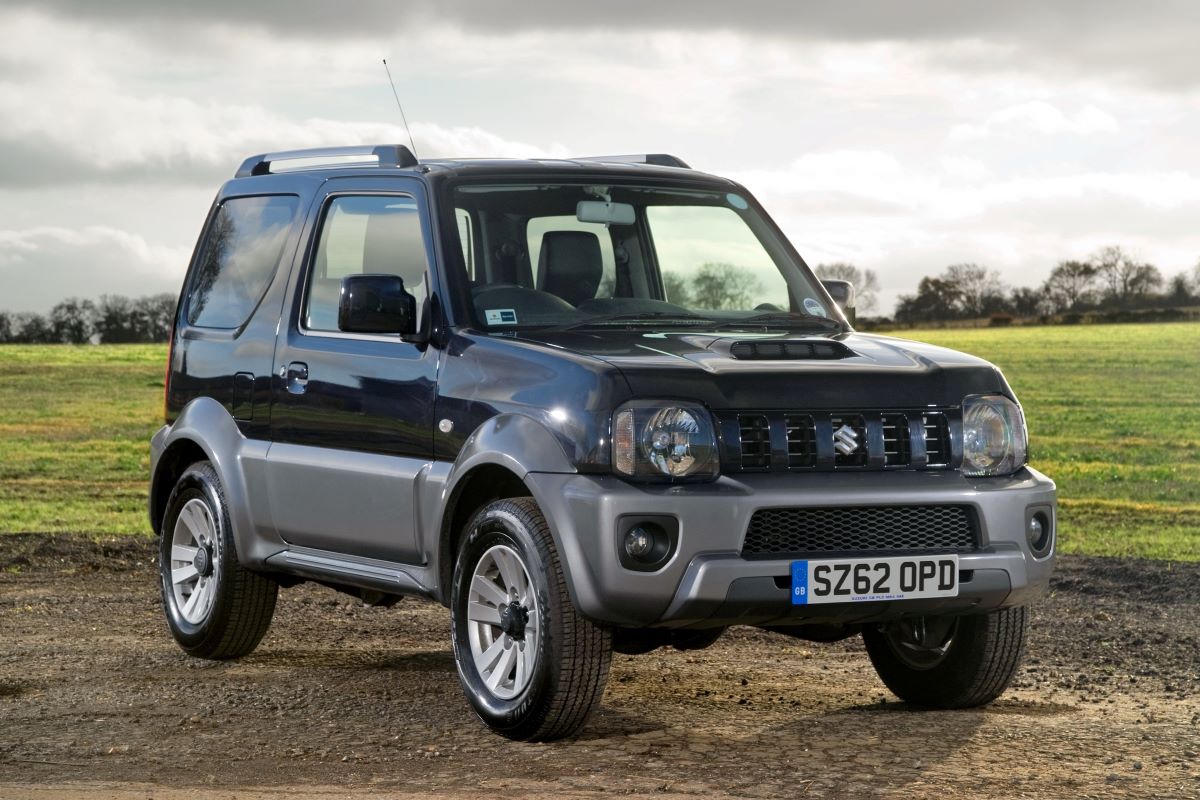
This form-follows-function approach extended throughout the vehicle, with simple, durable interior materials and easily accessible mechanical components.
Throughout its two-decade production run, Suzuki made only incremental updates to the Jimny, improved engines with better fuel economy, minor interior refinements, and additional safety equipment as required by regulations.
This conservative approach to product development meant that a 2018 model remained remarkably similar to the 1998 original, with compatibility of parts across the entire generation.
The Jimny’s enduring appeal came from occupying a unique niche that larger manufacturers increasingly ignored: a genuinely capable off-roader in a compact, affordable package.
Its combination of serious four-wheel-drive equipment, minimal overhangs for excellent approach and departure angles, and lightweight construction allowed it to tackle terrain that would defeat much more expensive vehicles.
This specialized focus earned it a dedicated following among farmers, rural residents, and off-road enthusiasts, particularly in markets where compact dimensions offered practical advantages on narrow trails or crowded urban streets.
7. Hindustan Ambassador (1958-2014)
The Hindustan Ambassador represents one of the most remarkable examples of automotive longevity in history, with a production run spanning 56 years with only minimal changes to its core design.
Based on the 1956 Morris Oxford III, the Ambassador became the definitive Indian car, serving as everything from humble family transportation to official government vehicle, taxi, and even police car across the subcontinent.
What made the Ambassador’s extraordinary production run possible was a unique confluence of economic and cultural factors specific to India. Under the country’s closed economy and “License Raj” system that restricted foreign competition until economic liberalization in the 1990s, Hindustan Motors faced limited pressure to fundamentally redesign its flagship.
Additionally, the Ambassador’s simple, robust mechanical design proved ideally suited to India’s challenging road conditions, limited service infrastructure, and emphasis on practical transportation over style or performance.
The Ambassador’s rounded, bulbous styling, already somewhat anachronistic when production began in 1958, became increasingly distinctive as automotive design evolved worldwide.
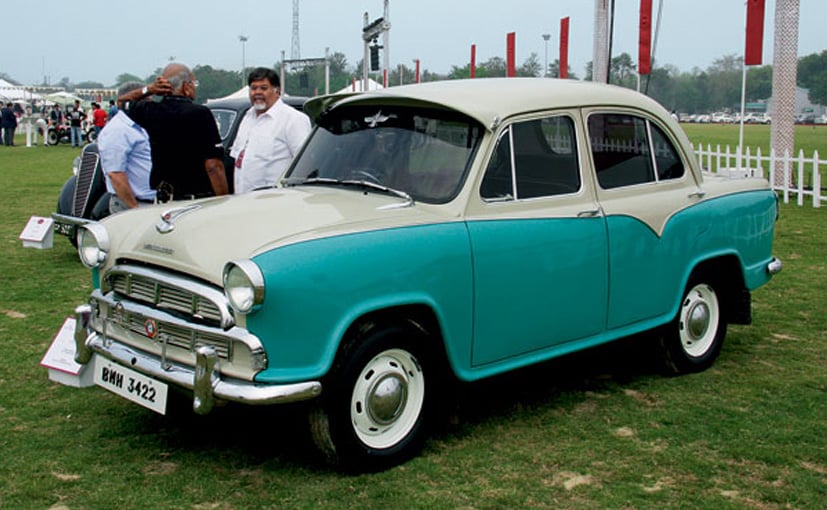
Its high roof, generous ground clearance, and spacious interior created a practical package for Indian families, while the robust construction and simple inline-four engine proved remarkably durable even in punishing conditions. The car’s floating ride quality, courtesy of its soft suspension, was perfectly matched to potholed Indian roads.
Throughout its production, the Ambassador received incremental updates rather than comprehensive redesigns. The original side-valve engine gave way to overhead valve designs, then eventually to Isuzu-sourced diesel and gasoline engines.
Interior amenities gradually improved, and subtle exterior changes marked different “Mark” designations, but the fundamental architecture remained recognizable until the final models rolled off the assembly line in 2014.
Perhaps the Ambassador’s greatest legacy is its cultural significance as “India’s car,” a symbol of the nation during crucial decades of development and independence.
When production finally ended due to the company’s inability to compete with modern designs in India’s liberalized automotive market, it marked the end of an era rather than simply the discontinuation of a model.
The Ambassador’s remarkable longevity demonstrates how a vehicle can become so thoroughly integrated into a nation’s identity that it transcends its role as mere transportation to become a cultural institution.
8. Volkswagen Beetle (Original) (1938-2003)
The original Volkswagen Beetle stands as one of history’s most iconic automotive designs, with a production run spanning an astonishing 65 years.
Although it disappeared from most developed markets by the 1980s, production continued in Mexico until July 2003, making it one of the longest-lived automobile designs ever created.
From Hitler’s vision of the “people’s car” to a counterculture symbol to a developing world workhorse, the Beetle’s journey represents a remarkable evolution in purpose while maintaining its essential design.
The Beetle’s distinctive rounded silhouette, originally engineered by Ferdinand Porsche to maximize aerodynamic efficiency, became one of the most recognizable shapes in automotive history.
Its air-cooled, rear-mounted engine configuration created a package that defied conventional automotive layout, placing the trunk up front and the engine in the rear.
This unusual arrangement, along with the vehicle’s simple torsion bar suspension and unibody construction, proved remarkably durable and adaptable across decades of production.
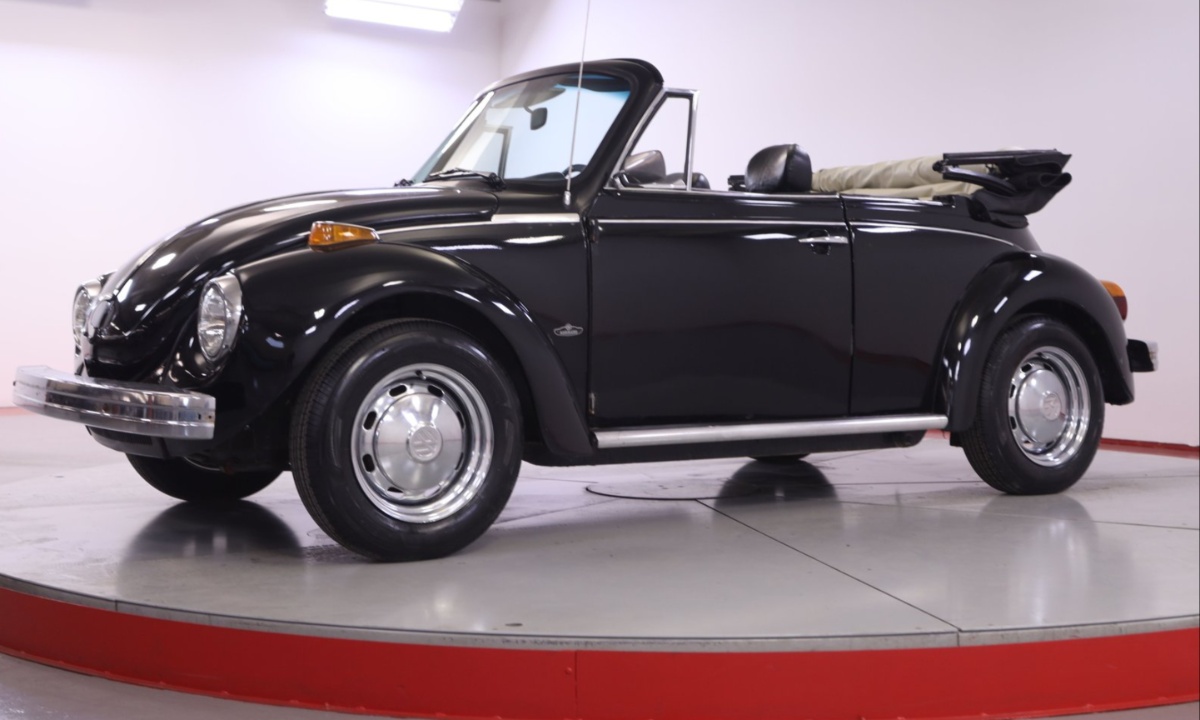
What makes the Beetle’s longevity particularly notable is how a design conceived in 1930s Germany remained relevant through multiple eras and across diverse global markets.
The car evolved from Nazi Germany’s KdF-Wagen to symbol of Germany’s post-war economic miracle, to counterculture icon in 1960s America, and finally to affordable transportation in developing markets like Mexico and Brazil. Throughout these transitions, the car’s fundamental architecture remained remarkably consistent.
The Beetle did evolve meaningfully over its production run, contrary to popular perception. Engine displacement increased from the original 1100cc to eventually reach 1600cc.
The distinctive split rear window gave way to a single oval and then a larger rectangular design. Safety and convenience features gradually improved, with later models incorporating modern braking systems and electrical components.
However, these changes occurred within a consistent design philosophy that prioritized simplicity, affordability, and durability. The Beetle’s eventual discontinuation came primarily from its inability to meet modern safety and emissions standards without a fundamental redesign.
However, its influence lives on not only through the modern “New Beetle” but also through the countless mechanics and enthusiasts worldwide who continue to maintain these vehicles decades after production ended.
The Beetle’s remarkable production run demonstrates how a genuinely innovative design can remain relevant across generations, adapting to changing requirements while maintaining its essential character.
9. Chevrolet Express/GMC Savana (1996-Present)
The Chevrolet Express and its GMC Savana twin represent a fascinating example of automotive continuity in the commercial vehicle sector, having remained in production with the same fundamental design since 1996.
While passenger cars and even pickup trucks typically undergo complete redesigns every 5-7 years, these full-size vans have persisted for nearly three decades with only incremental updates, demonstrating GM’s understanding of commercial vehicle buyers’ priorities.
What makes the Express/Savana’s longevity remarkable is how thoroughly it bucked industry trends. When introduced, these vans replaced the previous generation that had been in production since 1971, already an unusually long run.
The current generation arrived just as competitors like Ford were beginning to introduce European-style commercial vans with more modern packaging, yet GM maintained the traditional American van configuration: body-on-frame construction, rear-wheel drive, and V8 engine options mounted up front under a short hood.
This conservative approach reflected a clear understanding of commercial customers’ priorities: reliability, ease of repair, parts commonality across fleets, and compatibility with existing upfitting equipment.

Commercial buyers from delivery services to shuttle operators to work crews typically value proven technology and low total cost of ownership over the latest styling or efficiency improvements if they come with unknown reliability.
Throughout their production run, the Express and Savana have received meaningful updates despite maintaining their core architecture. Engine options evolved from traditional small-block V8s to more modern direct-injected variants and efficient diesel options.
Safety equipment expanded to include stability control, advanced braking systems, and camera technology. Interior amenities gradually improved while maintaining the durability required for commercial use.
What’s particularly notable about these vans is their adaptability to various commercial applications.
The platform has supported passenger versions carrying up to 15 people, cargo variants with cavernous interiors, cutaway chassis for ambulances and small buses, and countless specialized upfits from refrigerated delivery vehicles to mobile workshops.
This versatility, combined with mechanical simplicity and parts availability, has allowed the Express and Savana to maintain relevance in a changing market and continue as essential tools for businesses across North America.
10. Ford Crown Victoria (1992-2011)
The Ford Crown Victoria represented the last traditional American full-size rear-wheel-drive sedan to remain in production, with its second generation enjoying a remarkable 19-year production run from 1992 to 2011.
While primarily remembered for its ubiquitous presence in police fleets and taxi services, the “Crown Vic” earned its longevity through a combination of durability, simplicity, and perfect adaptation to specific commercial applications.
What made the Crown Victoria’s extended production run particularly notable was its steadfast adherence to traditional American car engineering principles long after the broader market had moved on.
Its body-on-frame construction, solid rear axle, and large-displacement V8 engine represented automotive architecture dating back to the 1960s, maintained in an era when most passenger cars had transitioned to unibody construction, independent suspension, and front-wheel drive.
This seemingly anachronistic approach proved perfectly suited to the vehicle’s primary markets: law enforcement, taxi services, and fleet operators who valued durability and ease of repair over the latest consumer features.
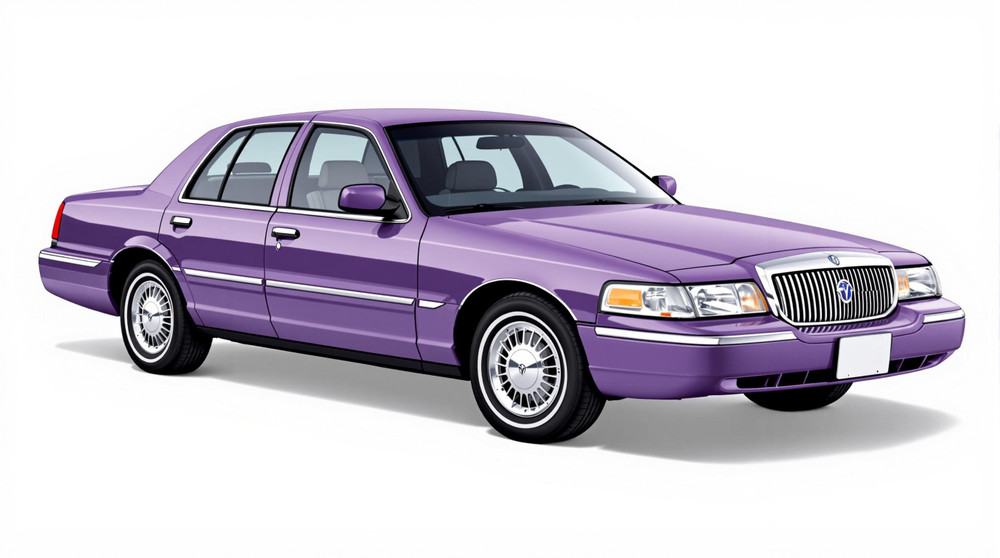
The separate frame construction allowed damaged body panels to be replaced without structural concerns, a significant advantage for vehicles that might see 300,000+ miles of hard use.
The simple mechanics could be maintained by technicians without specialized training, and parts compatibility across model years simplified inventory management for large fleets.
The Crown Victoria did evolve meaningfully throughout its production. The introduction of the “Panther platform” in 1992 brought modern safety features, improved ergonomics, and better fuel efficiency while maintaining the traditional layout. Later updates added dual airbags, upgraded brakes, rack-and-pinion steering, and eventually electronic stability control.
However, Ford maintained the core architecture that fleet customers valued, understanding that for these specialized applications, evolutionary improvement was preferable to revolutionary redesign.
What ultimately ended the Crown Victoria’s run wasn’t market rejection but changing regulatory requirements and Ford’s broader shift away from traditional passenger cars.
The vehicle’s discontinuation in 2011 marked the end of an era in American automotive design, leaving police departments and taxi companies to adapt to newer, but not necessarily more durable, alternatives.
The Crown Victoria’s legacy lives on through the hundreds of thousands of examples that continued in service years after production ended, testament to the validity of its design philosophy for specific applications.

